Why don't spiders get stuck on their webs?
We take on your science questions: Can animals feel guilty? Could drones detect landmines? What's the furthest a paper plane could fly, and why don't spiders get stuck on their webs? Plus, a look at this week's science news - a development for Europe's Extra Large telescope, and the health challenges faced at the Rugby World Cup.
In this episode

Can animals feel guilt?
We put Katie's question to zoologist Max Grey:
Max - It's interesting you mentioned dogs because there was a news article in the telegraph about this quite recently, a few weeks ago now, asking exactly that question which is, do animals feel guilt, specifically dogs and the is no essentially.
Kat - They really just don't care.
Max - Quite a lot of people have done the research specifically into dog guilt because people do look at their dog when it's done something bad and they see that's - it's called a hangdog expression. But as people have tried to tease apart whether or not this actually happens, they've actually done an experiment that shows no evidence of dogs feeling guilt.
Kat - How do you do that? How do you test whether a dog really does feel guilty?
Max - Well, they used the owners of the dogs to assess whether or not the dog was displaying guilt that could be subtle so they used the owner as a judge. And so, they did this by putting them in an experimental environment. They gave them biscuits. The owner trained the dog not to eat the biscuits so the dog knew it wasn't supposed to eat it. The owner left the room and then the dog was either allowed to eat the biscuit or the experimenter took the biscuit away. So when the owner comes back into the room, the biscuit is gone and they look at the dog. The owner then has to say, did it eat the biscuit, did it not, is it guilty? They can't tell. They don't know. So, not only do dogs probably not feel guilt but when you think your dog looks guilty, that's all in your mind as well. It's possible other animals could feel guilt. Dogs aren't that bright. There are other more intelligent animals out there.
Kat - I reckon, cats wouldn't care and would kill you as you sleep.
Max - Dogs could maybe feel guilt, turns out they don't. Cats, why would they?
Chris - Dogs have owners, cats have staff.

Have we tried every way to see dark matter?
We put Stephen's question to dark matter expert Andrew Pontzen:
Andrew - Dark matter is this extra stuff that we think has to be in the universe. We really can't make sense of what we do see out there in the universe without supposing there is some extra stuff that we can't see. The reason that we think it's got to be there is by watching the way that stuff moves around perhaps most famously, the way that stars move around inside galaxies. They kind of whirl around inside their galaxies really fast. That tells us that something has to be making them whirl around that fast. We think it's the pull of gravity but the pull of gravity just wouldn't be strong enough from the stuff that you can actually see directly. So, we suppose it must be some extra stuff there that we just can't see.
Kat - This is basically the stuff that makes the maths of the universe work. This must be something balancing it up and you seem that's dark matter.
Andrew - Exactly, yeah. Galaxies is just one example I should say. There are load of examples where this extra stuff - you know, about 5 times more stuff than we can actually see. It just makes everything balance up much better.
Kat - So, why can't we see it? I mean clearly, it's dark. So, how would you see it?
Andrew - People have tried in many different ways. And so, the question I think was asking.
Kat - Have we exhausted all the ways of doing it?
Andrew - Yeah and I suppose the short answer is no, we haven't actually exhausted all the ways. We've looked pretty damn hard though. We've looked in many, many different types of light. So you have things like infrared light, microwave light, you have ultraviolet light. We have all these different types of lights. We have looked into all of those to see if we can see it and the answer is pretty uniformly no, but if our theories about what is dark matter are correct and we do have some ideas about what it might actually be then perhaps it should actually turn up. Occasionally, you might be able to see it in the form of gamma rays. So, gamma rays are very, very high energy type of light and that's where we think the best place to look is, and people have been trying to do this experiment. There are gamma ray telescopes which you can look into space with and they particularly look at the centre of our galaxy where we think there's a big concentration of dark matter.
Chris - Weren't people building a big dark matter detector deep underground though Andrew? The rationale being that if you build it along way underground in say an old goldmine kilometres down, the overlying rock is going to filter out lots and lots of radiation that might fool you into thinking you're detecting dark matter, making it easier to spot?
Andrew - That's absolutely correct. That's what we called direct dark matter detection. So, that's trying to find the actual particles, the bits and pieces that actually make up dark matter as they come through the Earth. But when we look in gamma rays, we're trying to see what we call dark matter annihilation. So, these particles actually colliding with each other and turning into energy in the form of light, this very high energy light, and we're looking to see that using these gamma ray telescopes.
Kat - But presumably, to answer our questioner, no one has seen it yet.
Andrew - Nobody has seen it yet. Some people say, maybe we've seen hints, but there's certainly nothing that everyone agrees on.

Does putting your car key to your head increase its range?
We put this question to tech investor Peter Cowley:
Peter - As you say, if you go into YouTube, you'll find Clarkson for instance trying it a few years ago. So there's no doubt it does work. Now, why it works? There are two potential ways of looking at this. One is that it's a technical one which is, the cavity which is usually your head say, or your chest is acting as either a resonator in some form at the frequency that it's sending or it's acting as a ground plane. There's quite a lot of evidence that might be true. But if you look also a bit deeper, it may just simply be that you're raising it higher up, further from the ground. And so, there's no direct proof of either of those being correct.
Chris - That's your problem Kat. You're a little bit close to the ground.
Kat - I am. My head is so full of brain, that's why it doesn't work.
Peter - I should point out, the transmitted power from a little keyless remote is massively less than mobile phones. So, you're not actually endangering your brain cells in doing this.

How do probiotics survive stomach acid exposure?
We put this question to naked scientist Chris Smith:
Chris - The evidence is that they do make it and people have done a lot of studies to prove this. The way they've done this is you feed people with having established a baseline of what's already in their gut. Genetically, you feed them some of these probiotics. You then collect samples that are leaving their body and again, you can either try to directly culture or you genetically interrogate by getting DNA out of the poo, what's growing in there and you can prove what the lag time is, when these bugs turn up and how long they dwell in the body after you've eaten them. And you can prove therefore that they must be surviving because they're going in, coming out but then they're also hanging around for a while afterwards. So, that proves it works. How do they survive? Well, some of them are pretty tough and they're actually known as acidophili. They are lactobacilli. They actually eat lactic acid to produce an acid environment and as a result, they are actually quite well-adapted to surviving an acid. If you eat them with food and with glucose, they tend to survive much better than if you just eat them on an empty stomach. So the evidence is, if you eat these things regularly, they will make it through. At least a proportion of them will and these bugs grow fast. As a result, even if a few get through, they're still going to grow and colonise and we think therefore, they've got the potential to change the environment of your intestine in a good way.
Kat - So they're basically just pretty nailed hard.
Chris - Yeah, but in a good way because they will actually help to rebalance your intestine because part of the whole story about your microbiome is that there are more bacteria living in you and on you than there are cells in your entire body. There's maybe 100 trillion cells that are you. There's probably 100 times that many cells that are bacteria living in you. There's probably 2 kilos of bugs living in your gut, just bugs. If we filtered everything that comes out of your gut then actually, you'd find there's probably 2 kilos of bacteria in there.
Kat - Nice.
Chris - Yeah, very nice. Actually, they do a very good job of keeping you healthy. They eat your food for you, they pass on the results of what they digest and they therefore bring to the table a microbiological metabolic knife and fork that you haven't got in your own cells. They can break stuff down and make stuff you haven't otherwise got and they feed it to you. If they go out of kilter, your body is deprived of this source of energy, the source of chemicals, biochemical, and also, some vitamins. And so, rebalancing that keeps out the bad guys, and keeps you ticking along with the supply of the right source of chemicals that your body has adapted to need.

What happens when you know you know something?
We put Dominic's question to brain-expert Ginny Smith...
Ginny - There's actually probably two different things going on there. So the first one is what we call the tip of the tongue phenomenon which is this idea that you can have something in mind and you feel like you know what it is, but you just can't quite retrieve it. And it's really, really common and it can be more common in older people. It's more common if you get tired. That all suggests that there's something that's not quite working properly in your brain. We lay down memories and they're stored but then to access them, we need to activate the neural pathway that was laid down. Sometimes that can be difficult. We're not quite sure why it does sometimes go wrong, but one theory is that the tip of the tongue phenomenon happens when the answer is in your brain and you just can't retrieve it. There's another idea which actually gives you a little bit less credit which is that you don't actually know it. You just think you do. So, it could be that something in the question itself has triggered this sense of familiarity and then you misattribute that to you knowing the answer. And actually, it wasn't even in your brain to start with. So we're not sure which one of those is true. The second part of the question is that feeling of, "Oh! Of course, I knew that." Again, that's a nice little trick that our brain plays on us. We like to think that we're clever and we know a lot of things. Chances are, you never knew it was Kylie Minogue. It's much easier to recognise things than it is to recall them. So, it sounds about right once it's being said and that sense of familiarity of, "Oh, yeah that sounds plausible" your brain can misconstrue that and make you think that you actually knew it when chances are, you didn't....

Is English the most efficient language?
Psychologist Ginny Smith took a stab at answering Les' question...
Ginny - So, with the speed thing, that's actually an illusion. If you ask someone who speaks another language, they'll say that they think English people speak very quickly. That's because our brains actually segment words as they're being said. If you look at a recording of someone speaking a sentence, you'll notice that there actually aren't that many gaps. Where there are gaps, they're not always between words, but we hear gaps. But that is just something that our brain is doing. So, when you're hearing a language that you're not familiar with, your brain isn't putting those gaps in and it makes it sound like they're talking 19 to the dozen. Actually, they're not talking any faster than I am now. It's just because you don't understand them.
Chris - We do get quite a lot of emails. A lot of people in America write to me and say, "You guys speak really quick on your programme. You need to learn proper English." Kat - I really do. My mother is always like, "Slow down dear, you speak far too fast."
Chris - It's also proportional to coffee intake in my case certainly. The more coffee I've had, it can get quite fatiguing to listen to myself back again afterwards. Gosh! I have had rather a lot of coffee. In terms of whether or not the language is compressed though in terms of being linguistically efficient, what do we think about that because certainly, I know, compared with the German for example, a lot of management meetings in German companies, they are held in English because they have found actually in typical German efficiency terms, they can save a lot of time by not actually speaking in their own language. It's the scientific language isn't it - English - internationally.
Kat - I think that's really fascinating. I mean, German words are these enormous composite words, certainly in a language like that where you have Forschungsgemeinschaft instead of 'research'.
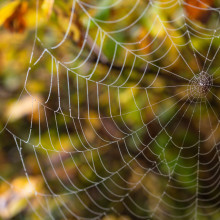
Why don't spiders get caught in their own web?
We put Victoria's question to zoologist Max Gray...
Max - The answer is that they get caught a bit, but they're very good at getting out of it essentially.
Kat - What is it in a spider's web then that's making it sticky? Tell us about the spider web.
Max - So, the web itself, the strand of silk that the spider creates to make its web out of is coated in a sort of sticky adhesive, "goo" let's call it. I'm not sure exactly what it's made up of. But it's kind of a thick liquid that sticks to the silk and that's what makes it sticky. The spider itself is very well adapted to avoid getting stuck in its own glue. But the interesting thing about this one, I went to research this question is that, it's only been figured out relatively recently. The paper that this was based on was only published in 2012. So, we didn't really know for quite a long time.
Kat - So, up until then, people just assume that spiders have these like magic non-stick feet.
Max - Probably. The assumption was that their feet are covered in some sort of anti-adhesive oil or something that neutralise the glue. That's only one of three separate things that spiders use to avoid getting stuck in their own webs. The second of which is they have a really clever structure on all of their legs. They're covered in tiny, tiny little hairs which has a dual effect of firstly just reducing the surface area that ever actually touches the web in the first place. So, there's less to stick to on a spider's leg than say, on a fly's leg. But also, they're very, very thin and all these tiny little hairs come to a very fine point. And so, when the glue does get stuck to them, the oil that those hairs is coated in causes it all to run down to the tip and then it just drops off, rather than sticking to that hair at all in the first place. Chris - So, why haven't the insects evolved the same trick?
Max - They don't spend as much time in a web.
Chris - I suppose it's a once in a lifetime experience?!
Max - How many insects manage to escape the web to reproduce and contribute their genes to the next generation?
Kat - Spiders that haven't figured that one out aren't really going to do very well in the long term.

18:16 - Concussions at the Rugby World Cup
Concussions at the Rugby World Cup
with Ginny Smith
Is rugby a risk for brain injury and concussion...
Ginny - This week, the Rugby World Cup has been going and there's been lots of talk about that. So, I've been looking at something that is not so positive about sport and that is concussions. So, the Chief Medical Officer, Martin Raftery has actually called for changes to be made to the rules of rugby because of these concussion problems that are happening. So, I was looking at, well, what's the science of concussion, what do we know about it, and what would we need to change to help prevent these things from happening?
Kat - So, what do you find? As an ex-rugby player, I'm intrigued. I've smacked my head on the floor a few times.
Chris - I thought you're going to say Ginny is an ex-rugby player!
Kat - I'm an ex-rugby player!
Ginny - No, I've never played rugby, but what's really interesting is we don't really understand what's happening during concussion. What we know is that if your head is hit against something or moved very quickly, your brain can effectively slosh around inside it and bash into your skull. That's not a good idea because you effectively sort of bruise the brain. It can swell and then that can cause more problems as it presses onto the skull. But one concussion doesn't generally do people too much harm. As long as they go away and look after themselves, they can generally get better from it. What can be a real problem is if you get another concussion while you're still recovering from the first one and then you can get what's called second impact syndrome. And that can be really, really bad news. It can even be fatal. But we don't really understand what it is about that second impact that's so dangerous and we also don't know how long the gap is before it's safe for you to have another head injury.
Kat - So, how are people trying to figure this out? What's going on now?
Ginny - There's lots of different research going on. Dr. Michael Grey from the University of Birmingham has been looking for biomarkers in the blood and the urine that might signal that you are still recovering from your concussion, so that you can maybe even do a blood test or a urine test and say when it was safe for a player who had suffered a concussion to go back on.
Kat - Knowing rugby players, they don't need much encouragement to pee in a bottle.
Ginny - But again, we don't fully understand the molecular process of what's going on either. So, there's other research going on at Trinity College Dublin with Dr. Matthew Campbell who's looking at the blood vessels and how they're affected during a head injury. And he's been discovering that actually, it might be that the blood-brain barrier becomes a little bit leaky after the brain has been hit and that might be what's causing lots of the problems. If that was the case, that would sort of open up a whole new area of research.
Kat - So perhaps by the time we get to the next Rugby World Cup, we'll have a few answers about how to make the game safer!

What is the difference between dark matter and dark energy?
We put Bhavesh's question to Andrew Pontzen from UCL... Andrew - The thing about dark energy is it's got a really bad name because I think one of the most famous equations in physics is Einstein's e=mc2, which makes it sound like energy equals mass times the speed of light squared whatever, but it sets up an equivalence between energy and mass. So, it would be very fair to think dark matter should be the same as dark energy. However, it's not. It's just badly named. Dark energy is the name we give to something beyond dark matter. We seem to need something extra; even more weird than dark matter if you like which seems to be pushing the universe apart. So, long after we realise that we need something to keep say galaxies glued together which is what dark matter is, we then realised in much more recent times that we actually need something forcing it apart to account for observations like a supernova for instance.
Kat - So, this is another thing to make the maths of the universe work.
Andrew - Yeah. It's beginning to look a bit like we've just patched everything up, isn't it?
Kat - Yes. There's a hole, quick shove a new thing in!
Andrew - Yeah. I mean, I think it's kind of fair actually in the case of dark energy. It is something that we've just shoved into the equations to say, "Okay, these observations have shown us that the universe is expanding at an ever increasing rate." It's just not something that should happen. So, we have kind of crowbarred this stuff in a bit. I think that's fair. In the case of dark matter which is the stuff that keeps stuff glued together, it's on a much firmer footing. It seems like it makes many, many predictions that we've been able to go and verify about stuff we should find in the universe, how it should be behaving. With dark energy, we're much less far on firm ground.

Are dark matter and anti matter the same?
We put Joel's question to Andrew Pontzen...
Andrew - No. So, anti-matter is a stuff that we can actually create say, at CERN, this famous particle physics lab. You can actually create anti-matter. It's like a kind of mirror image of normal matter which is the stuff that we are made out of. Dark matter is something else again. Although people at CERN are trying to make it, they're hoping for instance that the recently upgraded Large Hadron Collider might actually manufacture some of the stuff. So far, we've had no luck with that.
Chris - Probably worth mentioning that we make anti-matter in many hospitals because the way at which positron emission tomography scans work is that you have a device that makes anti-matter, you feed anti-matter into the patient and then where it gets metabolised in the brain because the brain is - when you're doing a certain job with say, a certain part of your brain, that part of the brain is going to use more energy. So, it's going to burn more particular fuels like the sugar that you've labelled with anti-matter. It will then spit out particles you've labelled. It will then spit out particles that you can see in the scanner. As a result, you know basically how your brain works. Thanks to anti-matter.
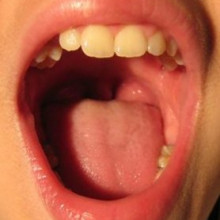
Why do people instinctively suck on a bleeding wound?
We put Dennis' question to Dr Chris Smith...
Chris - It does sound counter-intuitive, doesn't it?
Probably, there are two aspects to this. Number one is that whenever you injure any part of yourself, the reaction or the reflex response is usually to rub it better. When you rub something better, what you're doing is stimulating the nerve cells that convey low threshold stroking sensations to your brain. Those nerve cells are wired up in your spinal cord to inhibit, or switch off, the nerve cells that convey pain. So, by sucking on an injured body part, you're stimulating those big low threshold nerves with that stroking sensation and thereby, blocking the pain.
Number two is that, actually, although your mouth is full of germs, they are a fairly unique repertoire of germs that include streptococci that we call Viridans streptococci, and some staphylococci; they're generally low pathogenicity bugs. They probably are not going to be bad for you in a big way. As a result, your immune system is pretty good at dealing with them, and if you pushed a few of them into your wound, they're probably not going to do much harm. Also, when you clean the wound with your tongue or by sucking, you're going to dislodge foreign matter. You're probably going to dislodge some nastier bugs that might be in there and they'll get swallowed and then destroyed by your stomach acid.
But here's the real sort of clincher for this argument, which is that, every time you clean your teeth, if you do tests on people you can detect showers of microorganisms - and their DNA - going around your bloodstream. Because, when you clean your teeth, you make little lacerations in your gums. Also, when you eat food, same story, when you floss your teeth, little holes open up in your gums and the bugs in your mouth get into your bloodstream.
In the vast majority of cases, they're harmless to you because your immune system deals with them straight away; your spleen filters them out, without a problem. In a small minority of people, usually people who've got pre-existing problems with the valves in their hearts, then these microorganisms can sometimes settle on the valves of your heart and they cause a condition called endocarditis. But for the vast majority of people, it is not a problem.
So, there's the evidence that you're probably not carrying anything in your mouth that you're going to add to your wound and make yourself sick with it...

Why do we think dolphins are so clever?
We put Fiona's question to zoologist Max Gray
Max: - Yes, sure. They're definitely one of the most intelligent animals. Whether or not you can say they're the most intelligent animal, that's a little bit harder to say. You've got chimpanzees, new Caledonian crows. There's a host of animals out there, all of which are very intelligent.
What dolphins and these other animals have done so to speak to deserve this reputation is they pass a lot of intelligence tests. There are various things in the study of animal behaviour that we used to assess how intelligent animals are. Things like whether or not they can recognise themselves in the mirror, whether or not they can in some way, attribute a state of mind to another animal, be it in the case of dolphins, they can actually attribute emotional states to people. They communicate with each other. Dolphins have names for each other effectively that can be recognised in the acoustic signals of the clicking sounds that they used to communicate. Dolphins can use tools. Some dolphins use sponges to protect their noses when they go foraging in the sea bottom.
Kat - You're joking.
Max - No.
Kat - They put on a little like sponge?
Max - It's a dolphin face mask, yeah.
Kat - It's like a dolphin cycle helmet.
Chris - On their nose. They put them on their nose.
Max - Yes.
Kat - I literally nearly swore for the first time on air... you are joking.
Chris - It wouldn't be the first time, Kat.
Max - The interesting thing about that is it seems to be the clumsier, less nimble, less adept dolphins that end up doing this. It's like, "Well, I might injure myself so I'll just take this sponge with me just in case."
Chris - They do call it sponging.
Max - They call it sponging, yes.
Kat - That is literally the best thing I've ever heard. Dolphins: clever but clumsy.
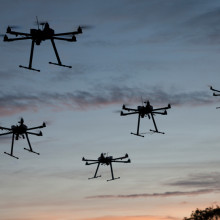
Could a drone be used to detect landmines?
We put Paul's question to tech investor Peter Cowley
Peter - Yes, that makes lots of sense. I mean, yes it's very topical to talk about drones. First, we got to look at what a landmine is and there's a variety of them from the small anti-personnel ones to the larger anti-tank ones which are very small. Over the years, they've been adapted or developed so that they have very little metal in them because metal is detectable with a metal detector etc. which is the old way of doing it. So, one way would be with a metal detector but these detector had a very big coil antenna so the drone have to be very big. It has to be very close to the ground, about 10 centimetres. Now, there's no way a drone.
Kat - That would be a giveaway.
Peter - .can fly 10 centimetres. They could run into a daisy or something or run into a rock. So, there are other ways of doing it. Dogs are used but you can't have a god in the drone, honeybees, rats, there's a Gambian rat and none of these work at all. We mentioned gamma rays earlier on. There's a gamma ray detector but that's quite large. Micropower impulse radars, etc. and there's acoustic ways of doing it. So in principle, there will be something somewhere but the bigger question is, once you've detected it, what are you going to do with it?
Kat - You still got to go and dig it out.
Peter - You've got to pinpoint it exactly and mark it or you've got to set it off.
Kat - We know it's in that field.
Peter - Exactly.
Chris - There's a company who we interviewed. It was about 10 years ago here on the Naked Scientists in Denmark and they have invented genetically modified landmine detecting cress. When these plants grow on an area of land which is contaminated with trinitrotoluene otherwise known as TNT, or other nitro group derivatives that it gives off, they've programmed into the plants. They have a genetic switch which it causes them to make anthocyanin which is the same stuff that makes beetroot go deep red. So the leaves pick up a lot of this stuff and turn to deep red colour. Apparently, it was pretty good but I haven't seen any more reports since so I don't know if it's one of those amazing stories that kind of got started and then they perhaps run out of funding or something.
Peter - The question was on drones actually.
Chris - Well, I was just looking for or thinking outside of the box.
Kat - But if you had a colour change cress, it's a long game. You plant the cress and then you can fly the drone.
Peter - With a simple camera system.
Chris - You land your drone on the red spot and off it goes, and bang with the landmine demined.
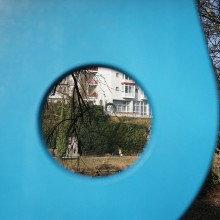
Why does a hole in a piece of paper correct my poor vision?
We put Ben's question to Dr Chris Smith
Chris - Yeah, you can do this yourself. If you have any kind of eye problem and you look through a very tiny hole into the distance, you will notice that you can see extremely well through that tiny hole. What you have effectively done is to create a pinhole camera and this is exactly how pinhole cameras work. The idea of a pinhole camera and if you haven't made one, it's very easy to do. If you get a cardboard box, make a tiny hole in one side and put a sheet of grease proof paper or white paper on the opposite inside surface of the box, you can then turn the box to look at something and you'll see an image of the thing you're looking at. It will be upside down or back to front but it will be on that white piece of paper. The downside is, it will be very, very dim. So, you don't get very much light coming in through your pinhole, but that's actually how it works. So, what's happening is, when you look at a distant object, individual spots of light will be coming to the pinhole. They'll go through the pinhole and then they'll be arriving at the screen as an individual spot of light. If you do that enough times, with lots of little spots of light, you'll build up a nice perfect picture of the thing you're looking at regardless of how far away it is. The reason it's dim is because most of the light coming from the object will hit the box. It won't go through the hole. Now the reason you see blurs when you wear glasses is because your eye, the pupil which is your own pinhole in your eye actually is collecting a lot of light in order to make it a good balance between how bright the object is and so on. And so, when you gather lots of light, what the eye then does is to focus lots of light from a target into one place on your retina. So, you see a clear picture of lots of spots of light brought together. So, you see a nice bright but in focus object. The downside of the pinhole is that because you're throwing away lots of the light, although it's extremely exquisitely well-focused, it's not very bright. So those early cameras, you had to do very long exposures to get a good picture, but it would be nice and crisp and sharp without needing a lens.
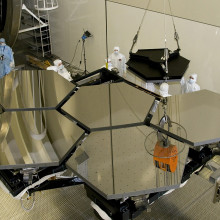
33:23 - Big news for Extremely Large Telescope
Big news for Extremely Large Telescope
with Andrew Pontzen, UCL
The University of Oxford have announced their role i the European Extremely Large  Telescope and it's going to be big. Andrew Pontzen from the University College London gave an update to Kat Arney...
Telescope and it's going to be big. Andrew Pontzen from the University College London gave an update to Kat Arney...
Andrew - It's slated to be ready and take its first observations in 2024 so it's still some way off. But the thing about this telescope is it's going to be almost 40 meters across. So, it's a 40-meter digital camera if you like, to look at the night sky. Just to give you some sense of just how big that is, it's going to be assembled out of lots of sort of small mirrors that focus the light. 800 of these small mirrors and each of those 800 small mirrors is sort of the size of a person. So, you assemble all of those together and you have this huge collecting area to collect light coming at you from space. It means we're going to be able to see extremely faint objects and get a lot more detail than we could before. The news that's come this week is that the latest instrument that's going to sit on the end of this camera and actually take the observations, take all that light and turn them into something we can use has just been commissioned. It's just been signed off - something called the HARMONI spectrograph and it's really going to put that huge collecting area for light to best use because it's not just going to take pictures. It's not like a digital camera that just takes some coloured pictures.
Kat - I'm assuming it's better than an iPhone or similar for camera phone.
Andrew - Even better than an iPhone.
Kat - Other camera phones are available.
Andrew - Your camera images are made out of individual pixels, individual dots which are coloured. Every single one of those, it's going to take what we call a spectrum. It's basically going to break the light down into all of the different wavelengths or colours that you can possibly separate it out into.
Kat - Is that across the whole of the electromagnetic spectrum or still just a kind of a chunk of that?
Andrew - Well, it's the chunk of that because it's going to be built in Chile which is quite high up, but there's still atmosphere that the light has to come through. That means a lot of it is filtered out. So, it's just the chunk that you can actually get at which is the visible light that you and I can see, plus some infrared light. But it's going to break it down into that spectrum and that means every single dot of say, galaxy that you've taken a picture of, you're going to get detailed exquisite information about everything that's going on in that tiny little dot.
Kat - So, we're going to get some really awesome pictures. Is it that kind of telescope? We're going to see these amazing things.
Andrew - You certainly are going to see incredible images, but you'll also going to be able to boil it down into data. That's what we really care about in astronomy now, it's data. And so, for example, in one shot, you could get a beautiful image of a galaxy but you could also tell exactly how that galaxy is rotating. In the past, that's something that we've needed to do with separate instruments. You would need to take one picture to have a look at what it looks like and then apply a completely different instrument to get a spectrum. So now, you can do all of it at once, get all of this very faint light, collect it altogether, and it's just going to be so exciting. But it is nine years away.
Kat - And is it the biggest telescope? Is it going to be the biggest in the world?
Andrew - It certainly is. The Americans are trying to compete but they're not quite going to get there because they're building a 30-meter telescope. This one will be very nearly 40 meters across.
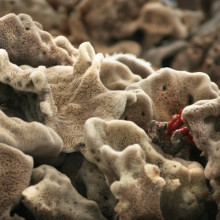
What is the most asymmetrical animal?
We put this to our resident zoologist Max Gray...
Max - So there's actually a very clear answer and there's lots of animals that are a little bit asymmetrical. You've got flat fish that as adults, that one eyes migrated around to the other side of its head. And you mentioned the crabs with the one large claw but all of those animals tend to develop symmetrically. They start off being symmetrical when they're first conceived or when they're larvae or embryos or something on that line. However, there's one thing that is never symmetrical at no point in its development unless you count when it's a single cell. That's sponges. So, coral reefs, you've got sponges which are generally considered - a single sponge is considered to be a single organism. But it's almost not. It's an aggregation of loads and loads of different single cellular sponge cells. As they form together, they form this colony which just kind of pieces together in different shapes and has no identifiable symmetry. The reason that counts as an organism rather than a colony because once they do all form together, they do start specialising all the little sponge cells do specialise to different roles and would no longer be able to survive on their own.
Kat - Presumably, before they get stolen by a dolphin to go diving with.
Max - Exactly, yes.
Kat - Does that answer your question there, John? Did you think it was a sponge?
John - Well, I would never guessed. That's kind of an extreme. So, okay if he classifies them as an animal, God knows they're asymmetric. I mean, I wash my kitchen sink every night, those little pores and whatever are not so much.
Kat - Well, there you go. When you go and wash up tonight, you can think of the sponge. Thanks very much for your question. Thanks for calling in.
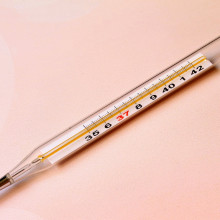
Do brains work better at cold temperatures?
Ginny Smith warmed up to Robert's question
Ginny - Well, the first thing to say is that one of our brain's important jobs is to keep our body temperature regulated. It can't go up too much or down too much, or all of our organs will stop working, including our brains. So, the actual temperature of our brains doesn't change all that much as the ambient temperature changes. But if we change the question to being, do our brains work well when it's hot outside when the weather is hot, then you get quite an interesting answer. Our bodies actually find it more difficult to cool us down when we're hot than they do to warm us up when it's cold. Both those processes use energy. They use up glucose and glucose is what powers our bodies, but it's also what powers our brains. So, one theory is that when it's hot, we actually don't make very good decisions. There's been some really interesting studies on this looking at the kinds of lottery tickets that people buy during hot weather and showing that people generally go for the easier option when it's hot outside.
Kat - This probably explains a lot about holiday romance as well.
Ginny - Probably, that could definitely explain that. The thought is that that's because your body is using up lots of its energy trying to keep cool and there's just not enough glucose left to power your brain and to power the decision making. But our bodies are really good at adapting. So actually, you're just right talking about holidays because the effect is going to be more from someone from the UK who goes over to Florida than for someone who's always lived in Florida. They're not going to notice that hot temperature as much. So, it really is. When you go on holiday, you're acclimatising to that new temperature. Your body is working so hard, there's no power left for good decision making.
Kat - Presumably, if you go somewhere really, really cold and you get really cold, that's also not going to be great either.
Ginny - Again, you're going to be using energy to warm yourself up, shivering and that sort of thing. the studies suggest that that's not as difficult as cooling yourself down. But yes, if you went somewhere really, really cold, I would assume the same would happen.

Could black holes be made of dark matter?
Andrew Pontzen got sucked into John's question
Andrew - Right. Black holes are these things that we think actually exist in the real universe.
At first, they were these kind of theoretical constructions that we thought, if there was so much stuff packed into such a tiny space that gravity got kind of out control, it could get to a point where gravity is so strong that not even light can get away from an object, in the same way that I can't leap off the Earth's surface because I can't get the speed up. You could get to a point where even light couldn't get off the surface of some object. That would then be called a black hole. But almost certainly, they consist of normal matter, so the stuff that you and I made out of that just happens to have come to a bit of a sticky end and ended up in a rather unfortunate part of the universe. There was a time when we thought perhaps we can tie these concepts together. Maybe we know we need all this extra stuff. We know we can have black holes. Black holes are very hard to see because the light can't get out of them. So maybe if we just had lots of little black holes floating around through space, it could account for all that extra stuff that we think we need. But today, we no longer think that that could be the case. The reason is that black holes are not actually quite invisible. There's a very subtle way you can actually see them.
Kat:: So, this means that they're not made of dark matter or suddenly we can see dark matter then.
Andrew:: It's something like that.
Kat:: It must be made of something.
Andrew:: The way that you would see them is if a black hole sort of floats in front of a star, say, you're looking at a star and a black hole floats in front then you would momentarily see that star actually get brighter. It might sound like that goes in a wrong direction but the black hole would kind of focus some of the light towards you, almost like a lens. The star would momentarily get brighter. So, if there were all these black holes floating around then when you're staring at a star, you would every now and again see it get a little bit brighter. People have done very careful experiments where they had telescopes really staring at stars. This does not happen. It doesn't happen in the real universe. So we don't think that you can have enough black holes floating around to make up what we need in dark matter.

How far would a paper plane thrown from 35000ft fly?
We put Mo's question to Chris Smith, to do some number crunching...
Chris - A long time. Let's think about this in several ways. One is, what's the objective evidence? Well, there was something called the Space Planes Project and I actually was doing a bit of reading about this because, in 2011, there was a project to deploy a fleet of 200 paper aeroplanes from almost the verge of space. Joel Veitch, whom we've actually had on this programme, does interesting things: one of these things he decided to do was to deploy this fleet of aeroplanes using a helium balloon, which ascended to 23 miles above the Earth's surface; balloon pops; planes deployed. The planes were endowed with a memory chip so that people could find them, read what's on the memory chip, and then they could contact Joel Veitch and his team to tell them where they had found an aeroplane. It's a bit like, in the old days, you would sort of release a helium balloon. If you found the card that had, "Please write back to me. I live at." on the card then it was a way of corresponding with people before the internet and Facebook came along. They released these things 23 miles up, which is three times the height we're referring to at 35,000 feet. But they did get reports, having released them from Germany, of planes being recovered across the northern hemisphere: Canada, America, they've got some planes back. The best figures I've seen for the performance of a paper aeroplane is that for every about 12 metres it goes along, it drops 1 metre. But the fact is, if they did pick some up in America, it flew for many, many hours to have made it that far from a German launch point. That's the first point. The second point is, what's the absolute minimum we can put on this? How long would your plane be expected to stay airborne at a minimum? Well say, you are really, really unaccomplished at paper aeroplane making and you manage to fashion a paper ball.
Kat - That's my level.
Chris - Well then we can use a simple bit of physics to work out how long that would stay airborne for. You need one of these equations of motion. So let's say the equation is d (distance) equals - you do a half times acceleration due to gravity times time (t) squared. So we need to do a bit of rearrangement. So, the distance is 35,000 feet - so that's about 11,000 metres. 11,000 metres equals a half times the acceleration due to gravity: that's 10 times t squared. So we're going to times by two across the board to get rid of the half. That's 22,000 metres equals the acceleration, which is 10 times the speed of gravity, multiplied by the time squared. Now, we're going to divide everything by 10 because the gravity is about 10 metres per second per second. So, we've got about 2,200 equals t squared; the square root of 2,200 is about 50. So, your ball of paper would fall for at least 50 seconds from 35,000 feet. In other words, you'd achieve, even if you'd made the world's worst paper aeroplane, a flight time of a minimum of about a minute.
Andrew- It probably wouldn't actually reach terminal velocity!
Chris - That's not including air resistance I should say!
Andrew - I suspect it would last a lot longer than that!

Was dark matter created with the Big Bang?
David put his brain bending question to cosmologist Andrew Pontzen... Andrew - It's a really hard question to answer for absolute certain because of course, we don't really know as we we're saying early on what dark matter and certainly, what dark energy is. The standard picture would be that certainly, dark matter was created in the first moments of our universe, what's commonly referred to as The Big Bang, alongside everything else that's more familiar to us. So, it couldn't have been in any way responsible for the creation of the universe because it was itself created. That I think is something that most cosmologist would subscribe to. When you start asking about dark energy, of course, it gets a lot more complicated because we're so in the dark about what it is. If you look at things like string theory, which are these kind of very speculative ideas about how the universe might be put together then there can exist things beyond our own universe and dark energy can be some kind of phenomenon that is related to stuff beyond our own universe. And so, once you have that, you could start to say, well maybe this idea of something like dark energy, maybe it is something that is outside our own universe that in some sense, you can say, exists independently of our universe or perhaps existed even before our universe was created.
Kat - It's really quite brain bending - do we have any evidence that The Big Bang was the start of the universe?
Andrew - Well, we certainly have very strong evidence that The Big Bang got things going. We have very strong evidence that the universe is expanding today. Wind it back and the universe must have been very small in the past. But what we don't know is, whether there was actually a moment of creation. We can track it all the way back to the tiniest fraction of a second but we don't know, does that mean there was a moment of creation or perhaps something very, very different kicks in at that point. We just don't know.
Kat - Do you think we will ever know?
Andrew - Yes, I think we will get better at this stuff.










Comments
Add a comment